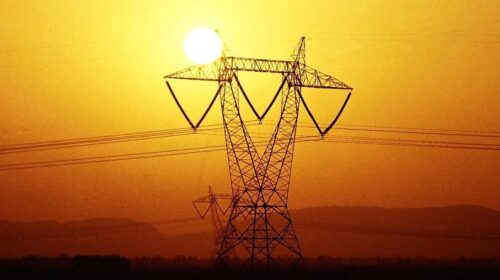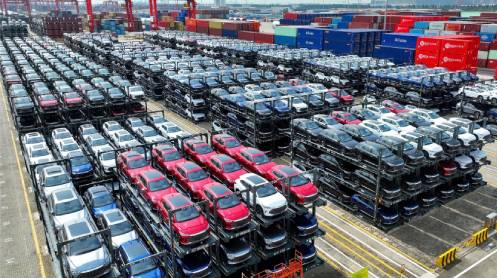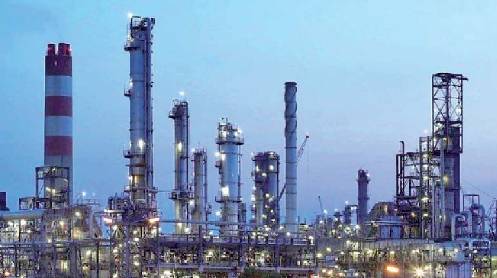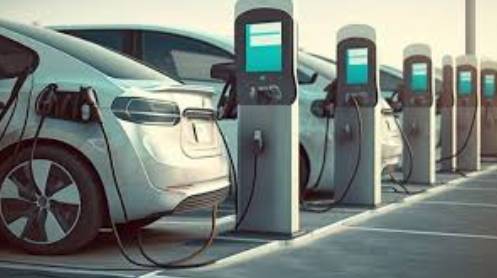The government has approved a 10-year plan to incorporate an additional power generation capacity of 36,292 MWs into the system, including Karachi, at estimated investment of over $50 billion.
Besides increasing the generation capacity, the government will substantially reduce its reliance on imported fuels to ensure the country’s energy security and save multi-billion dollars it spends every year on its import. Currently, the share of energy purchases from abroad in total imports is more than 40pc.
The National Transmission and Despatch Company (NTDC) prepared the ten-year Indicative Generation Capacity Expansion Plan 2022-31 (IGCEP-2022) and submitted it to the National Electric Power Regulatory Authority (OGRA) for approval last year. On October 19, 2022, the authority held a public hearing, also took input from stakeholders, and later approved the plan which it released on Friday. The plan will be reviewed every year.
The IGCEP-2022 builds on the plans and proposes a gradual shift from an energy mix heavily dominated by imported fossils like coal, furnace oil and RLNG towards one pillared by indigenous sources of energy, including hydel, Thar coal, wind and solar.
Furnace oil is expected to be phased out by 2031. Over 77pc of the installed capacity of the country by 2031 will be based on indigenous resources, with more than 80pc of indigenous resources will be Alternative and Renewable Energy (ARE) technologies of hydel, wind, solar, and bagasse. It also emphasizes development and utilization of local coal, which will result in increasing its contribution to around 7pc by 2031. Dependence on imported fuel will drastically reduce from the existing 45pc to less than 23pc in the year 2031.
In the base case scenario, $53 billion net present value (NPV) investment is required in terms of capital expenditures (CAPEX) and operating expenditures (OPEX) of electric power generation by the year 2031. For nearly last two decades, the economy is confronted with energy shortage issues. The implementation of the plan will avoid the boom and bust cycles that have become a recurring issue in the country. Electricity generation from RLNG and imported coal will drop to 2pc and 8pc respectively by 2031. The contribution of hydel would be increased from the current 28pc to 39pc, and wind and solar photovoltaic (PV) to 10pc each. The current contribution of wind is 4pc and solar PV is only 1pc.
The IGCEP-2022 also provides details for six additional scenarios, simulated to cater for any unforeseen events in the future.
These include scenarios dealing with lower and higher electrical demands as well as four sensitivity scenarios dealing with the early commissioning of the Diamer Bhasha Hydropower Project in 2029, commissioning of Chashma Nuclear (C-5) in 2029, inclusion of local coal-powered projects in 2027 and 2030 and unconstrained addition of projects based on renewable energy.
A significant quantum of 8,021 MW of existing thermal power projects is scheduled to be retired (7,339 MW of NTDC and 682 MW from K-Electric) during the planning horizon of the IGCEP 2022-31.
Major retirement of generation capacity for the IGCEP 2022-31 corresponds to RFO-based power projects, followed by local gas and then RLNG-based power projects. Seven RFO-based plants are to retire next year with a total capacity of 2,020MW for which the Cabinet Committee of Energy (CCoE) has given its approval. The plants include Guddu-II U (5-10) (620 MW), Jamshoro-I U1 (250 MW), Jamshoro-II U4 (200 MW), Muzaffargarh-I U1 (210 MW), Muzaffargarh-I U2 (210 MW), Muzaffargarh-I U3 (210 MW) and Muzaffargarh-II U4 (320 MW).
LNG-based KAPCO 3 (300Mw) will retire in 2023, while KAPCO-1 (400MW) and KAPCO-2 (900MW) will retire in 2024. For these plants, power purchase agreements (PPA) have been extended due to network constraints. A sensitivity analysis to assess the requirement of existing KAPCO CCPP beyond its PPA expiry, in years to come will be conducted in the ongoing Transmission System Expansion Plan (TSEP).
However, considering the historical dispatch of KAPCO owing to network constraints in the region, two blocks of KAPCO have been assumed to stay in the system till 2026. A total of 682 MW of capacity is going to vanish from the KE system in the coming years due to the retirement of power plants, including Gul Ahmed Energy Ltd (GAEL) 136 MW and TPL (126 MW). These have an operation time till 2024. Interestingly, five-dozen 14,159 MW committed renewable energy projects will be executed in 10 years.
As of June 2022, the total installed generation capacity of the NTDC system was recorded at 37,949 MW with 34pc contribution by RE and 66 percent by thermal projects. Similarly, K-Electric’s total installed capacity was recorded as 3,319 MW, including 97pc from thermal projects and 3pc from renewables comprising solar photovoltaic.
While forecasting these scenarios, the retirement of existing thermal power projects, including GENCOs, is also considered as per the expiry of their contractual term of the corresponding power purchase agreement (PPA) and the relevant Cabinet Committee on Energy (CCoE) decisions. Till the expiry of the contractual term of the corresponding PPA and GSA, existing RLNG and imported coal-based projects have been given a minimum despatch as per contractual obligations. Besides, 480 MW of net metering is considered each year till the end of the study horizon.
The IGCEP has forecast an additional 4,320 MW of net metering solar electricity in the system, i.e. 480 MW annually. The existing contribution from the net metering electricity to the system is 160 MW.
Minimum Despatch of 500 MW from existing KAPCO CCPP (Block-I and Block-II) in the months of May to September up till the year 2025 has been considered, beyond its PPA expiry i.e. Oct 2022, owing to network requirements/constraints, whereas, the remaining capacity (Block-III) has been retired as per PPA expiry.
In the year 2022-23, the installed capacity of the whole country from all generation sources is likely to be around 43,259 MW as against the demand of 28,425 MW. However, it is estimated that the installed capacity in 2030-31 will be 69,372 MW as against the demand of 41,338MW.







